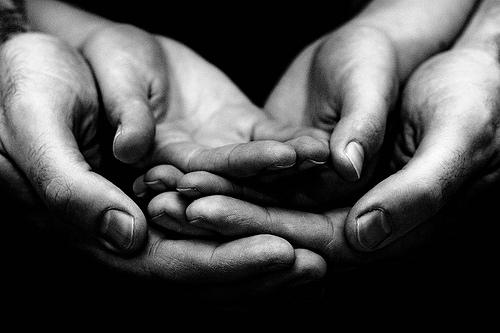 Two years ago, when I started working on issues related to human trafficking and technology, I was frustrated by how few people recognized the potential of technology to help address the commercial sexual exploitation of children. With the help of a few colleagues at Microsoft Research, I crafted a framework document to think through the intersection of technology and trafficking. After talking with Mark Latonero at USC (who has been writing brilliant reports on technology and human trafficking), I teamed up with folks at MSR Connections and Microsoft’s Digital Crimes Unit to help fund research in this space. Over the last year, I’ve been delighted to watch a rich scholarly community emerge that takes seriously the importance of data for understanding and intervening in human trafficking issues that involve technology.
Two years ago, when I started working on issues related to human trafficking and technology, I was frustrated by how few people recognized the potential of technology to help address the commercial sexual exploitation of children. With the help of a few colleagues at Microsoft Research, I crafted a framework document to think through the intersection of technology and trafficking. After talking with Mark Latonero at USC (who has been writing brilliant reports on technology and human trafficking), I teamed up with folks at MSR Connections and Microsoft’s Digital Crimes Unit to help fund research in this space. Over the last year, I’ve been delighted to watch a rich scholarly community emerge that takes seriously the importance of data for understanding and intervening in human trafficking issues that involve technology.
Meanwhile, to my delight, technologists have started to recognize that they can develop innovative systems to help address human trafficking. NGOs have started working with computer scientists, companies have started working with law enforcement, and the White House has started bringing together technologists, domain experts, and policy makers to imagine how technology can be used to combat human trafficking. The potential of these initiatives tickles me pink.
Watching this unfold, one thing that I struggle with is that there’s often a disconnect between what researchers are learning and what the public thinks is happening vis-a-vis the commercial sexual exploitation of children (CSEC). On too many occasions, I’ve watched well-intentioned technologists approach the space with a naiveté that comes from only knowing about human trafficking through media portrayals. While the portraits that receive widespread attention are important for motivating people to act, understanding the nuance and pitfalls of the space are critical for building interventions that will actually make a difference.
To bridge the gap between technologists and researchers, I worked with a group of phenomenal researchers to produce a simple 4-page fact sheet intended to provide a very basic primer on issues in human trafficking and CSEC that technologists need to know before they build interventions:
Some of the issues we address include:
- Youth often do not self-identify themselves as victims.
- “Survival sex” is one aspect of CSEC.
- Previous sexual abuse, homelessness, family violence, and foster care may influence youth’s risk of exploitation.
- Arresting victims undermines efforts to combat CSEC.
- Technologies should help disrupt criminal networks.
- Post-identification support should be in place before identification interventions are implemented.
- Evaluation, assessment, and accountability are critical for any intervention.
- Efforts need to be evidence-based.
- The cleanliness of data matters.
- Civil liberties are important considerations.
This high-level overview is intended to shed light on some of the most salient misconceptions and provide some key insights that might be useful for those who want to make a difference. By no means does it cover everything that experts know, but it provides some key touchstones that may be useful. It is limited to the issues that are most important for technologists, but those who are working with technologists may also find it to be valuable.
As researchers dedicated to addressing human trafficking and the commercial sexual exploitation of children, we want to make sure that the passion that innovative technologists are bringing to the table is directed in the most helpful ways possible. We hope that what we know can be of use to those who are also looking to end exploitation.
(Flickr image by Martin Gommel)

Hi Danah,
Thank you for the fantastic research and mentoring you’re providing in this area. Are there organizations, companies, or individuals you feel are doing effective work in this area? I’ve only heard of a couple of real-world examples. I’d love to get in touch with people/places who are making a difference in actuality (not just theory).
How is this possible with no city in the entire U.S. keeping statistics on any form of human trafficking, including CSEC, which is primarily DMST for girls under 18.